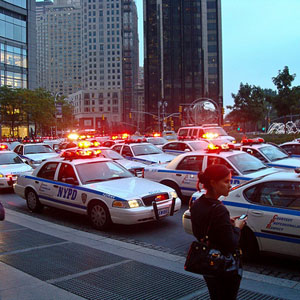But then something remarkable happened, according to Greg Berman, author of the recent report “A Thousand Small Sanities: Crime Control Lessons from New York.” Over the last two decades, New York City experienced an unprecedented turnaround in violent crime. In 2009, there were 461 murders in the city, a 79 percent drop from 20 years earlier. Other crimes drastically declined as well, with the city seeing significant decreases in rapes, robberies and car thefts. Berman quotes Frank Zimring, author of the book “The City That Became Safe,” who called the crime rate reduction in New York City “the largest and longest sustained drop in street crime ever experienced by a big city in the developed world.”
 The report, released by the Centre for Justice Innovation, explores the possibility of applying the policies and practices implemented in New York City to communities in the United Kingdom – where in the 2009-2010 fiscal year, London’s Metropolitan Police tallied more than 170,000 instances of violent crime, including 113 murders and more than 2,800 rapes.
The report, released by the Centre for Justice Innovation, explores the possibility of applying the policies and practices implemented in New York City to communities in the United Kingdom – where in the 2009-2010 fiscal year, London’s Metropolitan Police tallied more than 170,000 instances of violent crime, including 113 murders and more than 2,800 rapes.
Berman praised New York City’s commitment to incarceration alternatives, stating that the city has “long been blessed with an infrastructure of non-profit groups” such as the Vera Institute of Justice and the Center for Community Alternatives, which he considers vital players in the development of community-based solutions. Another key to the city’s success, according to Berman, is its use of specialized court-based programs, such as drug courts and mental health courts, which give judges the discretion to eschew prison sentences for treatment and rehabilitation services.
Place plays a critical role in policing, Berman says, not just people. And New York City successfully expanded its focus through its use of localized “hotspot” patrolling – most notably, the New York City Police Department’s use of COMPSTAT, which zeroes in on specific precinct and neighborhood activity. Also important, according to Berman, was the promotion of informal social control processes that encourage voluntary adherence to the law through implicit and explicit community and family pressure.
An example of community pressure, recently created, teen-led youth courts in some New York City neighborhoods allow local juveniles to hear actual low-level misdemeanor cases. According to Berman, youth court sanctions are intended to be restorative, not necessarily punitive.
“As valuable as they are in terms of training leaders and providing an early intervention for troubled teens, youth courts’ most valuable contribution is probably symbolic,” he said. “They are a potent symbol of the justice system being willing to cede a measure of authority to local voices and to engage in the co-production of justice.”
In his conclusion, Berman calls the United States’ legal system, and its often-overlapping federal, state and local jurisdictions, “notoriously labyrinthine,” but admits it sometimes allows innovation to bubble up. For New York City, Berman says most of the credit for the steep decline in violent crime should stay in the city.
“Very few, if any, of the programmes described in this paper originated among federal officials in Washington, D.C.,” he says in the report. “Indeed, most were the product of frontline police chiefs, judges, and other criminal justice reformers responding in creative ways to the immediate problems in front of them.”
But he also believes the federal government can help cities. He praises Congress for authorizing funding to put more officers on the streets of New York City, as well as the U.S. Department of Justice for supporting intermediary organizations that provide training and assistance to what Berman calls “would-be reformers” in the community. He said that, no matter which party was in power at any time over the last 20 years, federal investments in community courts and policing have remained relatively consistent.
“This may be the ultimate lesson of the New York experience,” Berman wrote. “The ability of local reformers to generate a thousand small sanities and the consistent willingness of national government to encourage and sustain them over the long haul.”
Photo from BlogNuevaYork


























